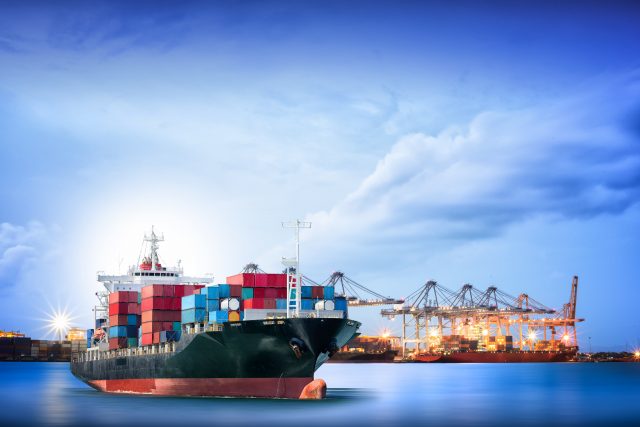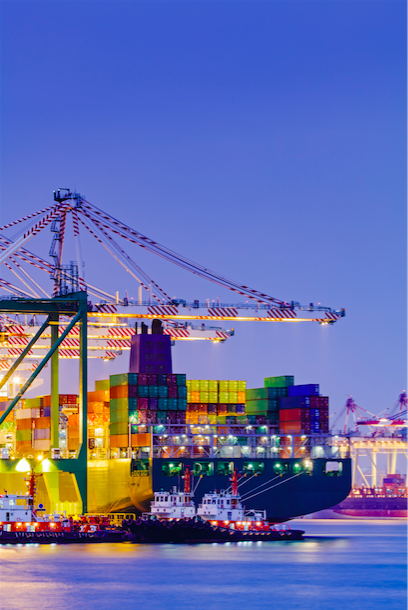This website uses cookies so that we can provide you with the best user experience possible. Cookie information is stored in your browser and performs functions such as recognising you when you return to our website and helping our team to understand which sections of the website you find most interesting and useful.
How post-Brexit logistics is affecting fine wine shipping
With regulations governing UK/EU trade having changed significantly on 1 January, James Lawrence investigates how the new trade laws are affecting the shipping of fine wine.

Despite the upheaval caused by the pandemic, transporting wine across the English Channel was a (relatively) straightforward process in 2020. It required a minimum level of regulatory checks and procedures; haulage firms benefited from the EMCS system, an EU customs database that greatly simplifies the shipping process.
However, 1 January 2021 marked the end of frictionless trade between the UK and continental Europe. Although an agreement to prohibit tariffs was ratified by both parties, the regulations governing UK/EU trade have changed significantly. Philip Cox, owner of Romanian winery Cramele Recas, describes the new bureaucracy as “nightmarish” and “potentially unworkable” for smaller wineries and UK businesses. But does the trade agree with him?
“It is fair to say that the new logistics framework has been a challenge for the industry. Even before Brexit, transporting wine was admin heavy. We required roughly 200 pages of documents to move an average shipment between the UK and EU,” explains Ashley Hopkins, Liv-ex director of operations.

“Since 1 January that admin has multiplied. The original 200 pages are still required, but now a similar sized export will require additional documents (like import declarations), resulting in around 800 pages.
“It’s not just the paperwork that’s the problem. In order to produce these documents you need certain wine expertise, and you also need to include additional parties such as a freight forwarders, all of which adds time and costs to the supply chain.” adds Hopkins.
European wine producers, importers and major transport firms like Hillebrand are all attempting to grapple with this new reality. The transportation of goods to and from the UK has become more time consuming, expensive and cumbersome. To cite some examples: from 1 January 2021, producers have been forced to ship goods in fumigated and treated stamped wooden pallets.
In addition, logistics firms must now use ‘Economic Operators Registration and Identification (EORI) Numbers’. EORI numbers are issued by customs to identify traders throughout the EU – they are now an essential legal requirement for UK import/exports. Under new VAT rules, the tax is now paid in full at the port of entry to the UK before the goods are released. This is potentially a cash flow risk for smaller businesses.
“The new post-Brexit trading framework has impacted iDealwine significantly; in expected and unexpected ways. The additional paperwork was expected but negotiating new rates and new shipping partners were not,” says Alix Rodarie, head of international development at iDealwine.
“New laws and even seeking advice from legal experts was expected, but legal experts unable to clarify or interpret a number of issues relating to importing wine to the UK was not. Customs declarations and duties payable were expected, but the complexity and number of charges for delivering were not.” Rodarie explains that the firm has been forced to build new logistical and legal relationships from scratch, and then communicate these changes to their clients.
“As I’ve said before, it is now easier for me to sell to Japan than the UK,” adds Philip Cox. “Apart from the expense and time wasting inherent to carrying out a full customs declaration, I now have to include an importer’s label on every bottle, detailing their address, etc.
“I exported 4 million bottles to the UK in 2019 across 12 different brands. So I would have to produce 12 different versions of the label for each wine. Unfortunately, I’ve ceased exporting to my smaller customers. The new administration costs mean that shipping small volumes is not worth my while. The real victim has been the British consumer.”
It is certainly a sensitive topic. A colleague of Cox, who wished to remain anonymous, told db that “prices have increased due to problems caused by Brexit. The market has changed considerably – the lack of return loads from the UK and lack of capacity allocated to the UK market has caused prices to increase.’
With overheads continuing to rise across the supply chain, producers and importers must now debate how much ‘pain’ can be willingly shared between the key parties – or alternatively, will UK consumers be forced to shoulder the overwhelming burden of rising prices?
Some sections of the trade are optimistic that the end consumer will not suffer unduly. Equally, there is a broad consensus that smaller brands may now find exporting prohibitively expensive, leading to fewer niche labels on our shelves.
“Our shipping charges have been altered. We used to be charged per case, which meant that we could ship tiny parcels from some growers. We are now charged per pallet and have a sliding economy of scale – this puts our smallest suppliers at a real disadvantage,” says Siobhán Astbury, buying director at Haynes Hanson & Clark.
“There are certainly some wines that have had to go up by a few pounds per case, but for the moment nothing extreme. We’re getting a slightly better exchange rate now than we were at the end of last year, which also helps cancel things out. But it’s still very early days.”
Matthew O’Connell, head of investment at Bordeaux Index, told db that “fine wine prices have positive momentum at the moment, so realistically if there is some upwards pressure from the logistics challenges it is hard to separate that from the broader market performance dynamics.”
As with Covid-19, uncertainty is the most pernicious aspect of this transition into a new trading relationship. At the moment, UK customs are forgoing certain checks on goods to ease companies through the transition period. However, when this ‘nursemaid period’ ends, Cox forecasts “unprecedented and costly delays” at UK customs and excise. “The worst is still to come,” he predicts.
European and UK businesses are also preoccupied with lobbying against the introduction of wine import certificates. This new piece of bureaucracy was part of the UK/EU Brexit deal – it was created to replace the VI-1 forms, which the EU currently uses to regulate the import of non-European wines.
The VI-1 form places a costly burden of responsibility on wineries and shipping firms: the VI-1 requires a full laboratory analysis of each wine being shipped, including alcohol and acidity. The UK/EU version dispenses with the laboratory requirement, and yet is still considered to be a totally unnecessary layer of red tape.
“As an industry we are used to VI-1 forms for wines originating outside of Europe and this will remain business as usual (albeit a UK version). One of the sections on the new import certificate form requires a customs stamp, which is likely to add an additional 200 pages and 200 stamps – it’s all getting a bit daft,” says Hopkins.
Earlier this year, Cox told db that “the form simply duplicates information already contained in other documents – invoice, customs declaration, etc. It is therefore utterly redundant.” WSTA chief executive Miles Beale has been heavily involved in lobbying the government to remove the regulation from UK law.
In late March, the government delayed the introduction of the wine import certificates until 1 January 2022. Nevertheless, Beale has stated that the threat of an eventual implementation of the forms is still “very real.” He will now continue to lobby the UK government to remove this stifling barrier to trade. It remains to be seen whether they will listen.

